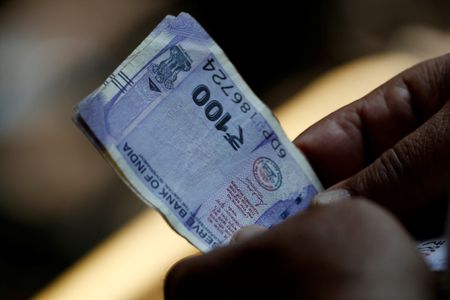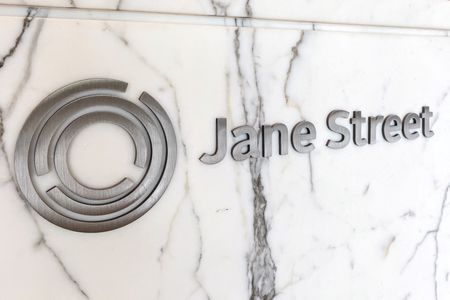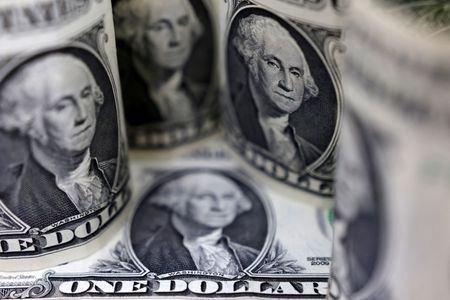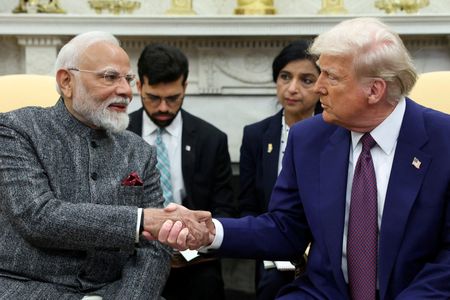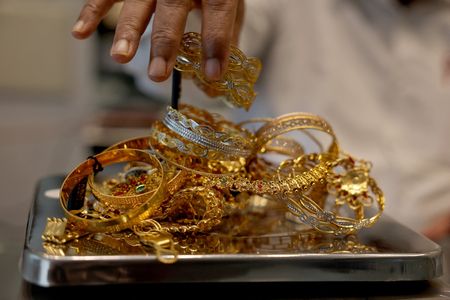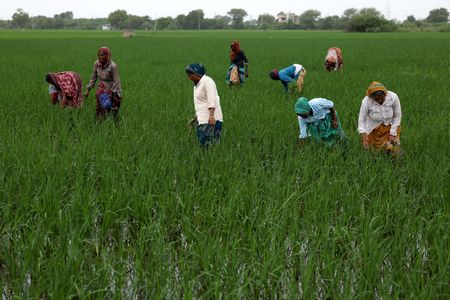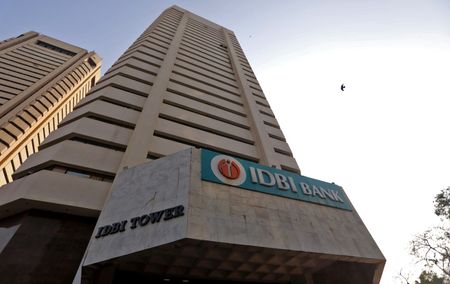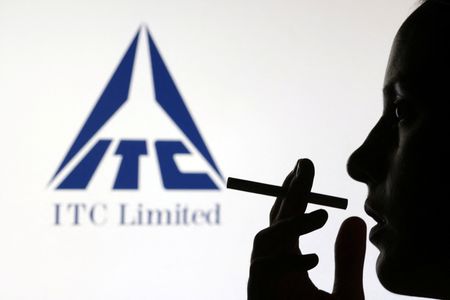(Corrects to change rupee closing level to 87.54 from 87.53 in paragraph 2)
By Ashwin Manikandan
MUMBAI (Reuters) – The Indian rupee nudged higher on Friday, supported by likely intervention from the Reserve Bank of India, but still logged its worst weekly drop since late 2022 due to worries over U.S. tariffs and sustained foreign portfolio outflows.
The rupee closed at 87.54 against the U.S. dollar on Friday, a tad higher than its close at 87.5950 in the previous session. On the week, the currency declined 1.2%, its worst performance since December 2022.
The South-Asian currency fell to 87.74 on Thursday, just shy of its all-time low of 87.95 in February, following President Donald Trump’s announcement of a steeper-than-expected 25% tariff on Indian imports.
Firm intervention by the central bank on Friday helped the rupee find some footing, but traders and analysts expect a depreciation bias in the near term.
Consistent foreign outflows from local stocks alongside elevated corporate dollar demand are likely to keep the local currency under pressure, traders said. Foreign investors net sold $2 billion of Indian equities in July.
India’s equity benchmarks, the BSE Sensex and Nifty 50 were lower on the day and logged their fifth consecutive weekly fall.
Meanwhile, Asian currencies fell after the U.S. imposed sweeping new tariffs on dozens of trading partners. The Korean won led losses with a near 1% fall.
The Reserve Bank of India’s monetary policy decision and developments related to U.S. trade tariffs will be the key drivers for the rupee next week.
“The market now firmly believes that tariffs are transactional rather than ideological,” ING said in a note.
“Perhaps the biggest risk now is that of secondary sanctions on the likes of China, India and Turkey as Washington tries to turn the screws on Russia and those buying its cheap oil,” the brokerage added.
The dollar index was up 0.1% at 100.1, as investors await key U.S. labour market data later on Friday to gauge the future path of policy rates in the world’s largest economy.
(Reporting by Ashwin Manikandan; Editing by Savio D’Souza)

